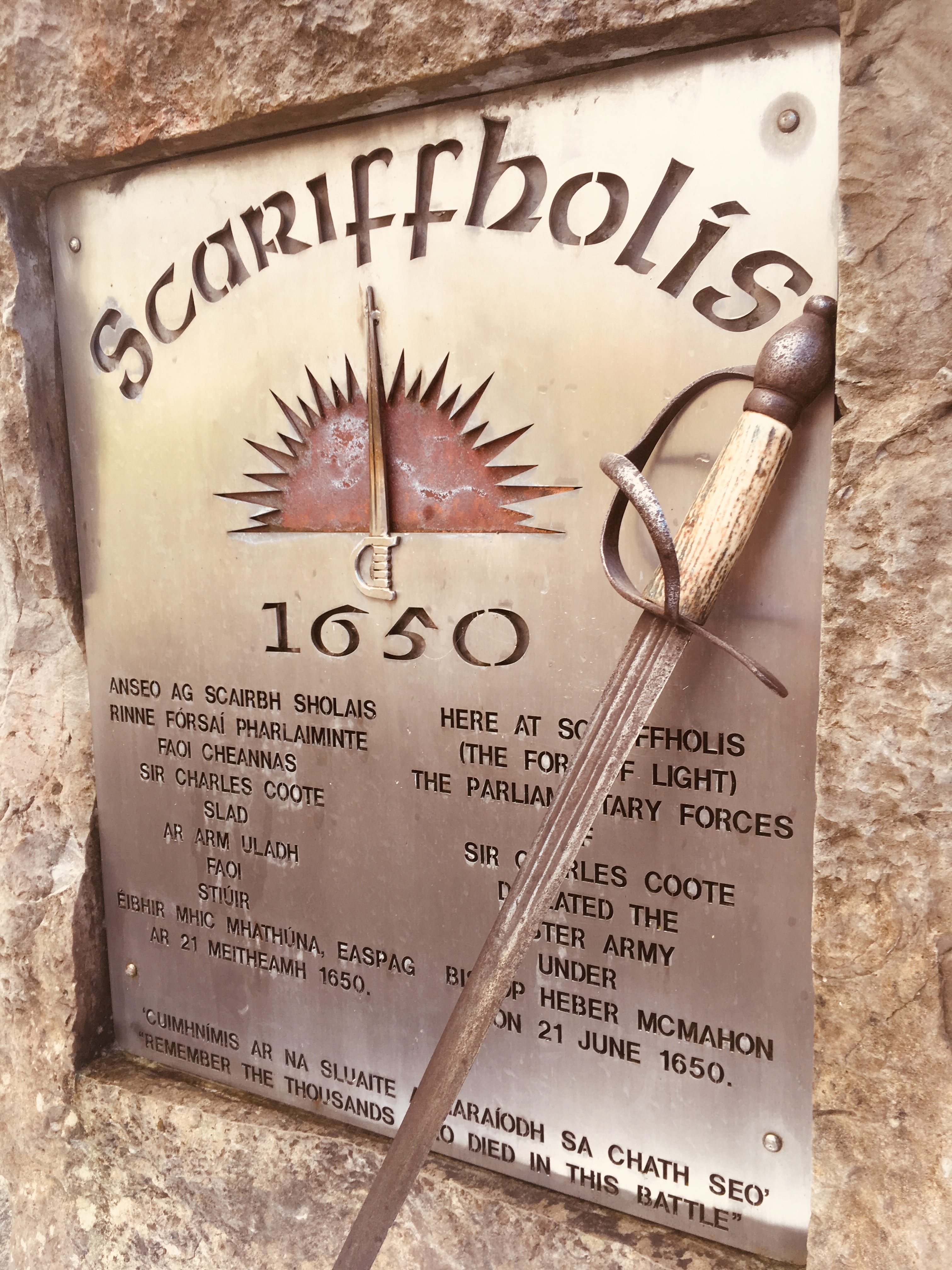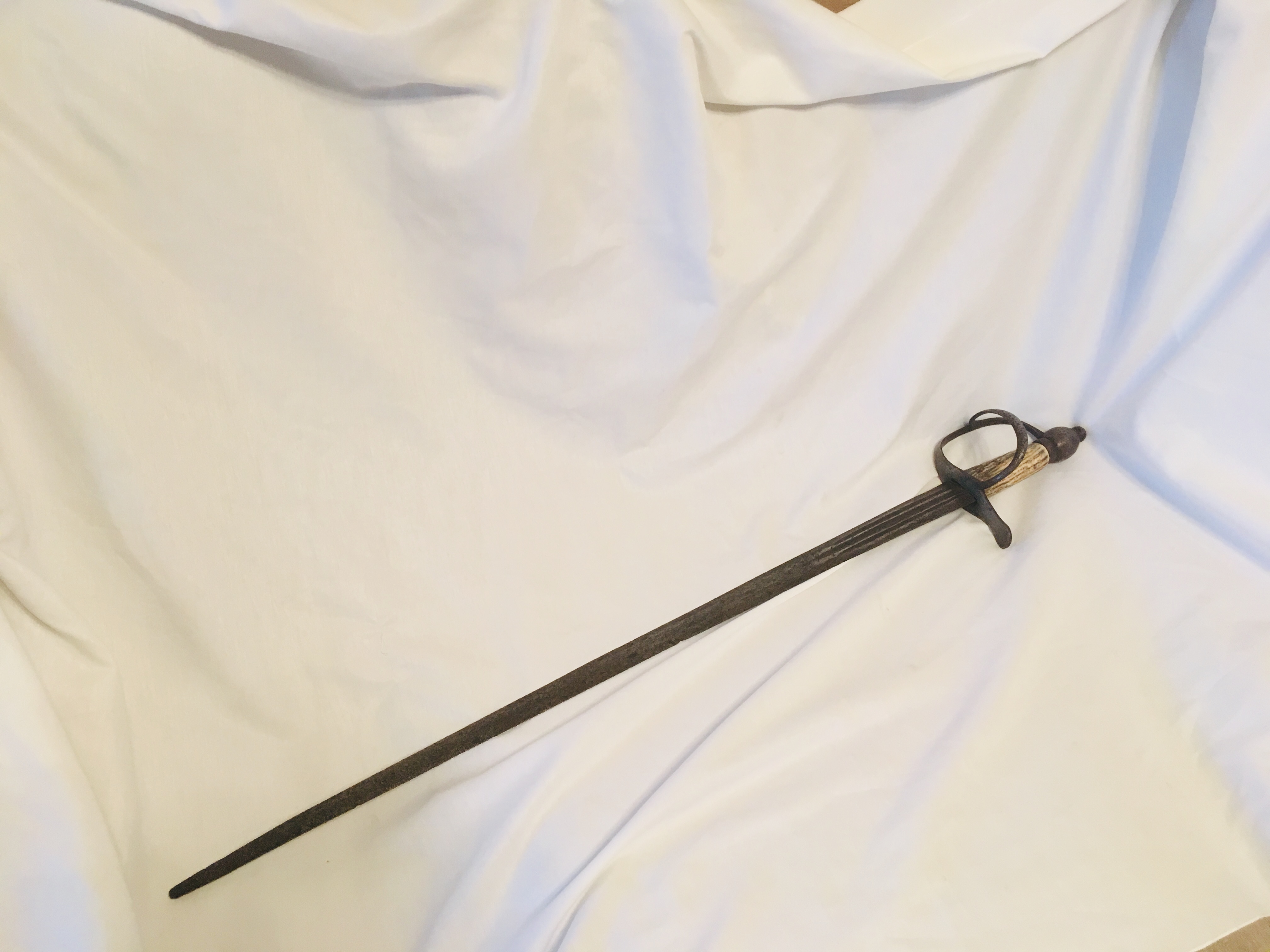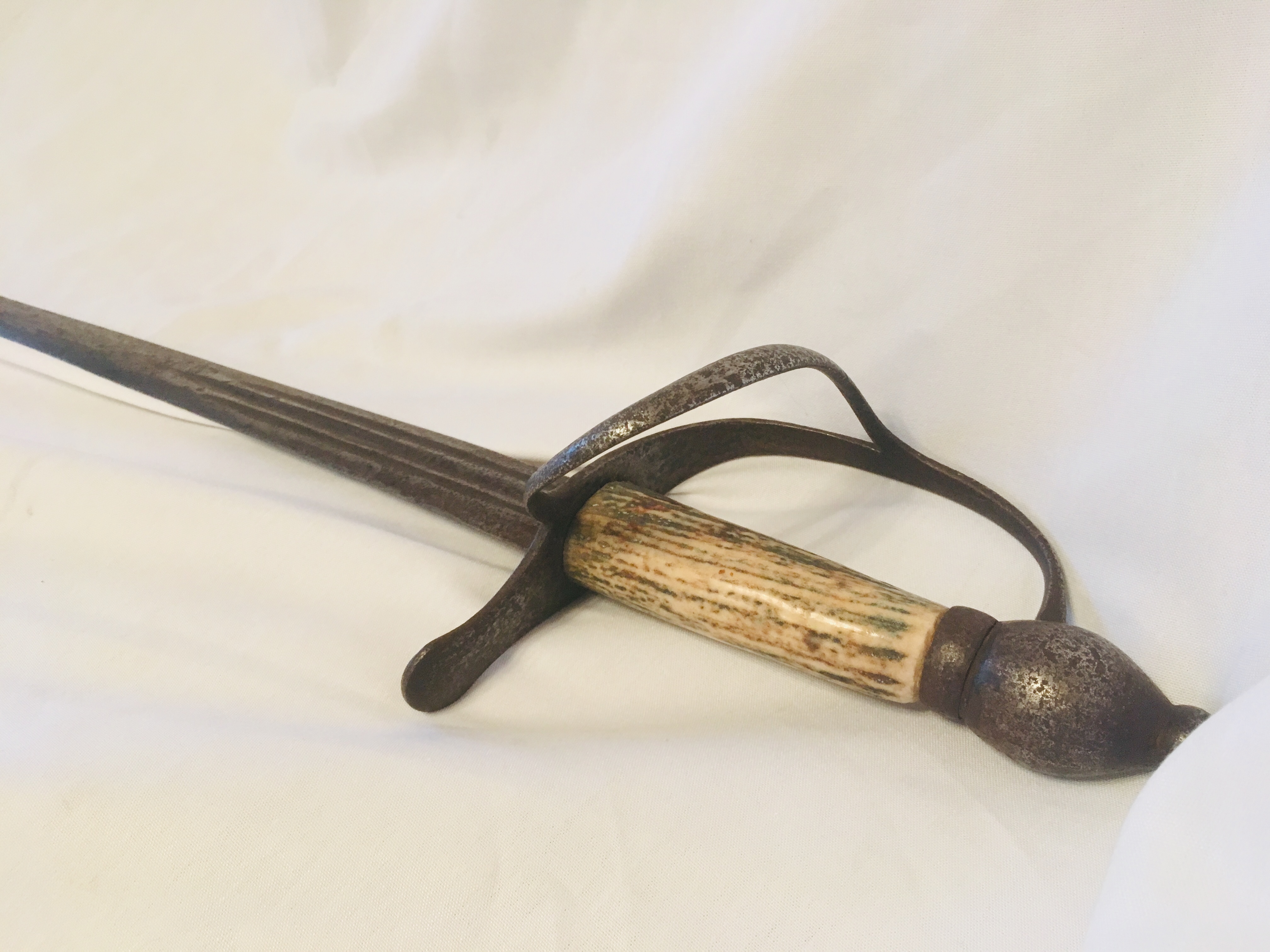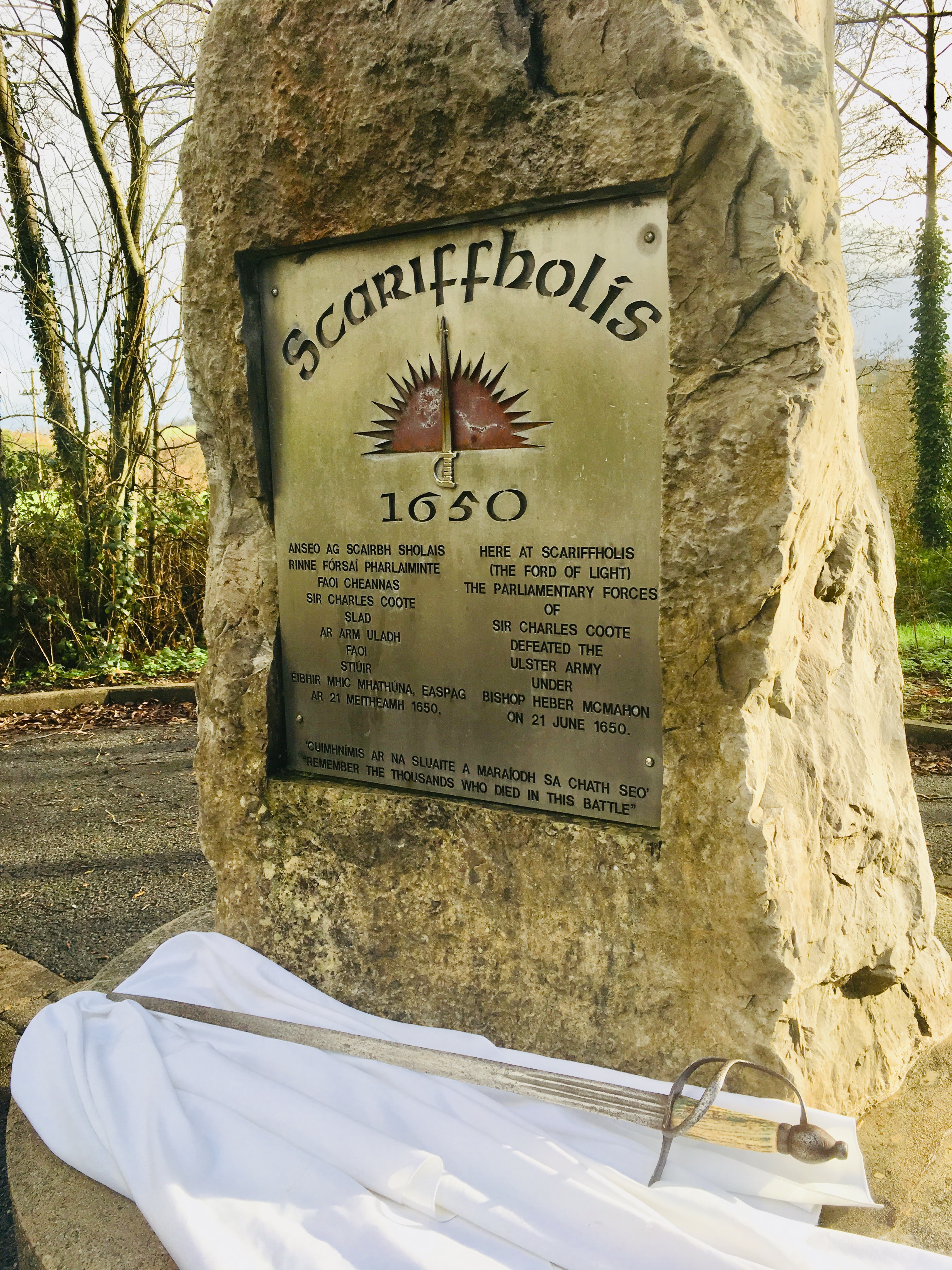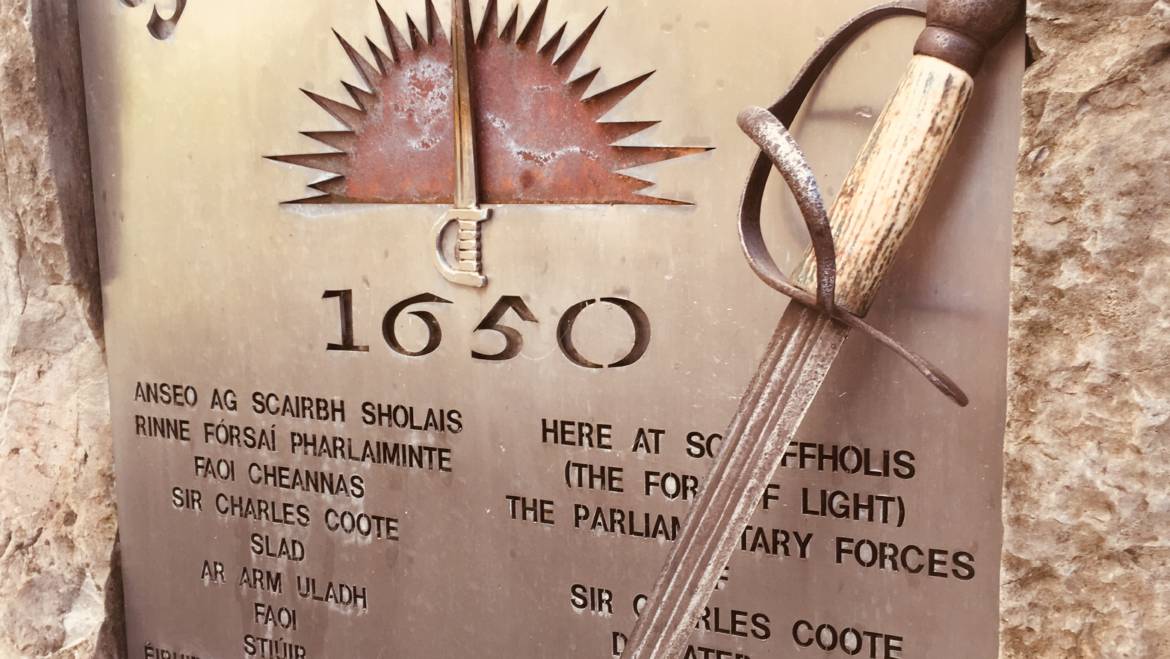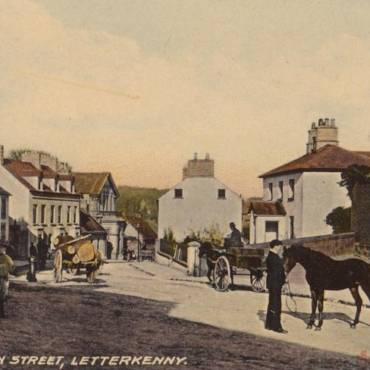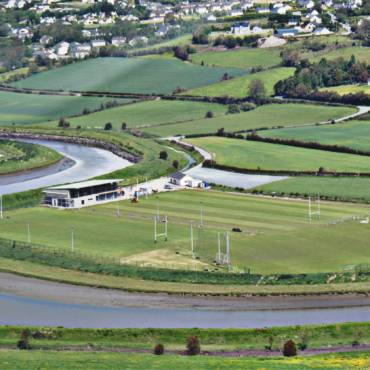The Sword of Scarrifhollis
The Letterkenny Historical Society recently had the pleasure of attaining a remarkable piece of local history. After reading an article on the Battle of Scarrifhollis, the Society was contacted by someone who held an interesting artefact that had been passed down through their family for many generations and kept in storage. This artefact was a sword that had been reputedly used in the decisive battle on the banks of the Swilly on 21st June 1650 and kept safely ever since in the family.
Having been presented with the sword by the owner (who wishes to remain anonymous), the Society contacted an expert in the field of historical weaponry and although it can never be proven if the sword was actually used in the battle or not, it was confirmed that the sword dated from “the mid 17th Century” and was not a replica. Owing to the fact that the Battle of Scarrifhollis took place in 1650 and the local family (who can trace back to living in the area for many generations) have long held the belief that it was used in the battle, it would appear that this weapon is indeed a “Sword of Scarrifhollis”. Having gratefully received the weapon on loan, the Letterkenny Historical Society thought it only fitting to return the sword to the scene of the battle and photograph it beside the monument that stands there today (see below).
The Battle of Scarrifhollis
Bishop Heber MacMahon had led the Royalist/Confederate army into the town of Letterkenny in June 1650 with the Parliamentarians, under the leadership of Sir Charles Coote, following them.
Rather than engage with the Parliamentarians in the town though, MacMahon chose the more defensive higher ground of nearby Dooen, near the crossing at Scariffhollis, to wait for their arrival. The terrain of this area suited this defensive stance, being rocky and inaccessible to horses. MacMahon, however, then made a fatal mistake by allowing Col. McSwiney and 1,300 men to march on Doe Castle to secure the fort, depleting his numbers considerably as a result.
And so it was that in the summer of 1650, the opposing forces of the Royalist/Confederate army under Bishop Heber MacMahon and the Parliamentary forces of Sir Charles Coote stood on either side of the shallow ford of Scarrifhollis ready to engage in battle. On the 20th of June, MacMahon could see Coote’s army on the opposite side of the river near Crieve/Rockhill. The Laggan Army had joined forces with the Parliamentarians and Coote’s army now held approximately 3,000 infantry and 800 horses, outnumbering MacMahon’s 2,600 and 400. On the morning of the 21st June 1650, Bishop MacMahon, against the advice of his generals, moved from his defensive position on the hill of Dooen and engaged Coote’s army on the flat lands around the river.
After about an hour of engagement, the Parliamentary forces utterly routed the Ulster Army. In the mayhem and panic that followed, many of McMahon’s army drowned in the river or were trapped in the silt of the tidal banks thus making them easy targets for ruthless execution. By sunset, the rout was complete. Bishop MacMahon escaped however and made his way to Enniskillen but was captured and beheaded six months later with his head being displayed on a pike at Derry’s gates. After this resounding defeat, the Ulster Army had been obliterated and the re-conquest of the northwest by Cromwell’s army was complete. Today in the town of Letterkenny, the estate of MacMahon Villas on the New Line Road is named after the defeated Bishop while at Scarrifhollis a monument to the battle stands, erected in the year 2000 to mark the 350th anniversary.
